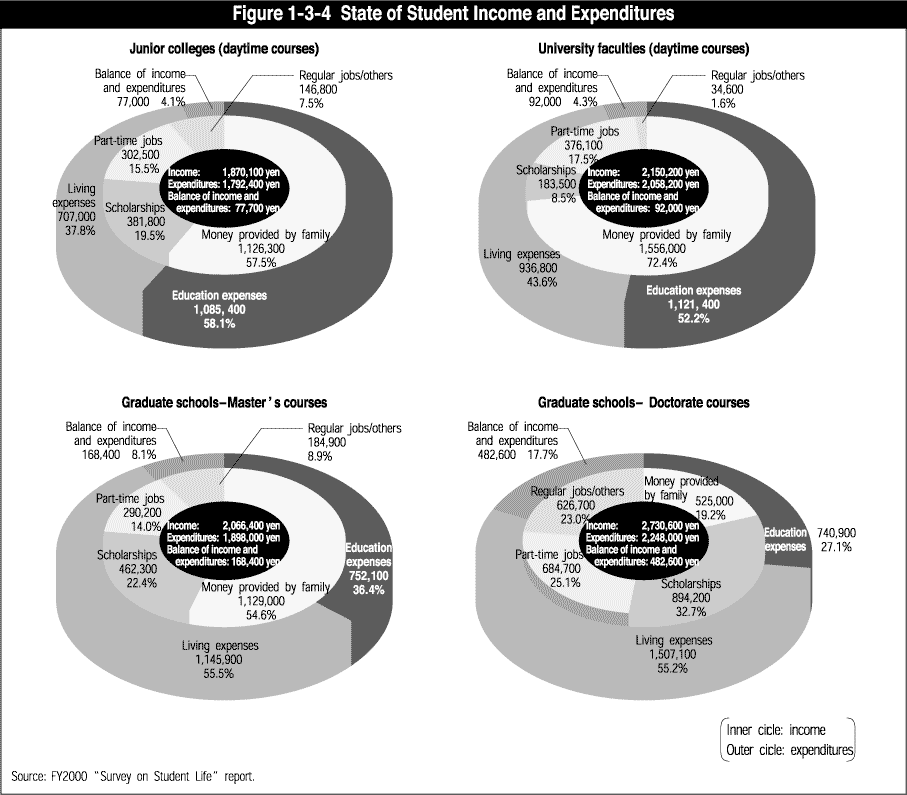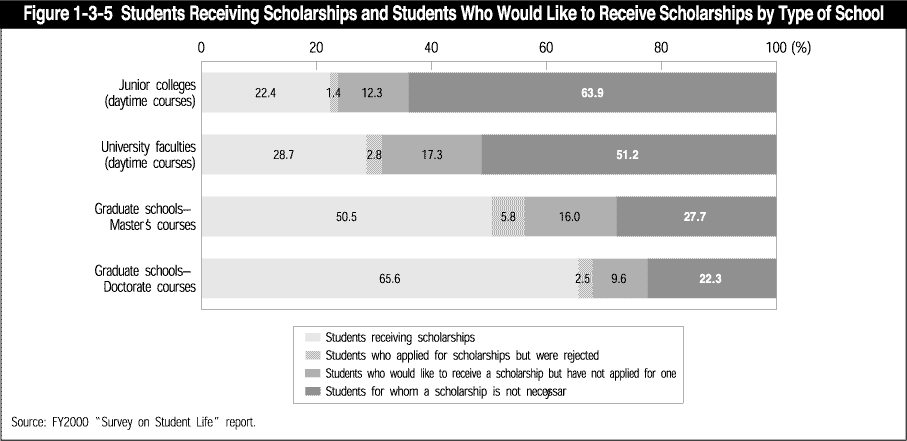| Home > Policy > White Paper, Notice, Announcement > White Paper > FY2003 White Paper on Education, Culture, Sports, Science and Technology >Part1 Chapter3 Section2.3 | ||
The expenses required of higher education are covered by the public purse, that is, by national and local governments, and through tuition fees and other fees paid by students, the recipients of higher education.
There are substantial disparities in annual student living expenses depending on the form of the university in which a student is enrolled and the student's living arrangements. However, looking at the average for universities and junior colleges, annual living expenses for students at universities are 2.06 million yen, and the equivalent figure for junior colleges is 1.79 million yen (FY2000). Foruniversities and junior colleges, private institutions are 400,000 to 500,000 yen more expensive than national or public institutions, which is about the same differential in student fees such as tuition fees and others.
Looking at the breakdown in sources of income to cover these living expenses, for university and junior college students, the main sources of income are money provided by the families of students, scholarships and income from part-time jobs. For both university and junior college students, money provided by families occupies the largest proportion of income. In particular, the extra student fees of private universities and other private institutions of higher education compared with national and public institutions are mostly covered by families. In both universities and junior colleges, more than 80 percent of students have part-time jobs. Of those, about 60 percent work at the part-time jobs on a permanent basis. Furthermore, at universities, scholarships are necessary for about 50 percent of students, but only 28.7 percent of university students and 22.4 percent of junior college students are receiving scholarships from the Japan Scholarship Foundation or other institutions.
Graduate school students have higher living expenses than university or junior college students, and for these students, their economic independence from their parents is strong. The trend for graduate school students is to depend on scholarships and part-time job income for most of their income, and the percentage of graduate school students working at part-time jobs on a permanent basis is higher than for undergraduate students. Furthermore, 50.5 percent of master's course students and 65.6 percent of doctorate course students are receiving scholarships, but about 40 or 50 percent of students who are not receiving scholarships would like to receive one. Because there is a strong demand for scholarships, it is desirable to enhance economic support further, such as through strengthening the scholarship system for graduate school students ( Figures 1-3-4 and 1-3-5 ).


| Back To Top | MEXT HOME |